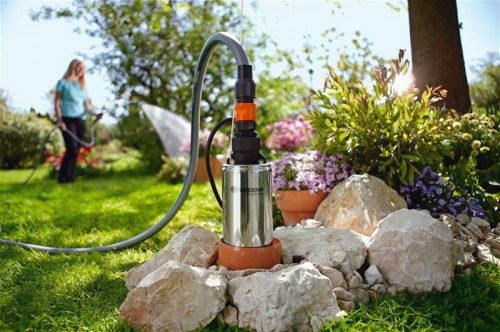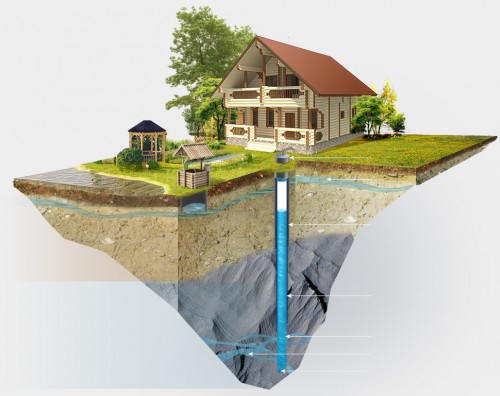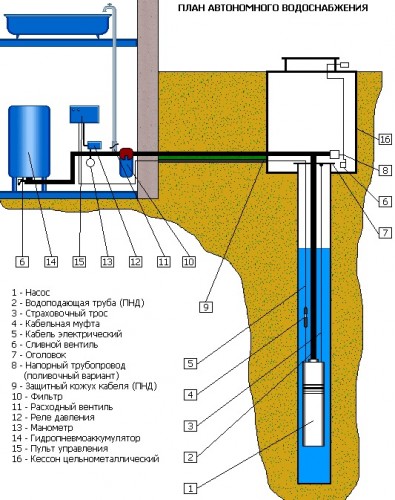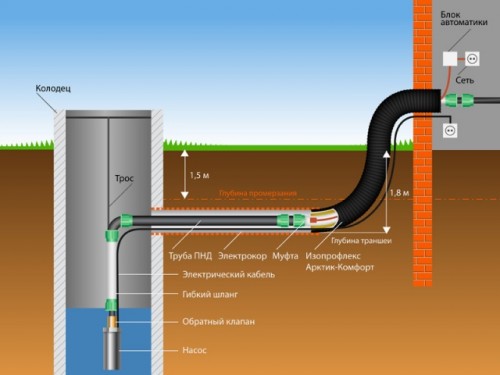
Autonomous water supply with their own hands Plot

The autonomous water supply system is an independent communication that provides water to the house. It is installed where there is no possibility to connect to the system of centralized water supply. As a rule, it is at home behind the city. Before moving directly to the process of system arrangement, it should be determined which water consumption will be required. This indicator affects several factors. In addition to elementary domestic needs, other expenses should be taken into account. If we are talking about a country house, it may be watering the garden, flower beds or their own bath. We will tell you in this article about how to equip autonomous water supply in this article.
Content
Advantages of water supply of autonomous type
Installation of autonomous water supply When arranging communications at home has a number of significant advantages. Consider them in more detail:
- Due to the presence of a pump with autonomous water supply, the water pressure in the system will always be optimal. This circumstance is especially relevant for houses that have several floors.
- Water will always be available, and in the required quantity. In the event of interruptions with electricity or a malfunction of the pump, thanks to the installation of the accumulative tank, the problem of lack of water will not arise.
- The quality of the resulting water will be at a sufficient level. Unlike the centralized system, where old and corrosive metal pipes are used in operation, modern autonomous system hoses will ensure good quality water.
Options for autonomous water supply
When arranging autonomous water supply, there are several variations of the system connection. Consider them in more detail:
- One possible source is a reservoir that is located near the structure. Water from it comes by hydropneumatic automatic equipment.
A well can be a well to be an autonomous water supply of an apartment. As a rule, the flupent diameter should be over 8 cm, and the depth varies from 15 to 250 m, depending on the type of source. The well autonomous water supply can be both sandy and artesian:
- the depth of the sandy source, as a rule, reaches 30 m. Such a well is capable of covering consumption of water consumption for one house;
- in the event that large volumes of water are used, for example, for filling the pool or watering of the garden, the version of the artesian source is best suited. It has a greater depth and is able to provide a few houses with water.
Important! You can drill well anywhere in the site, including drilling and under the house. It is necessary to perform high-quality well insulation and removing it from the release of sewage. Water will require a tank for 200-300 liters, which should be placed in a separate room above the source itself.
Thinking how to make autonomous water supply year-round, it is necessary to install the caisson on the well. This is a metal structure, the task of which is to ensure thermal insulation and protection of well from wastewater.
- Another source of autonomous water supply of a private house is a well. Its diameter should be over 50 cm, and the depth is at least 10 m. For pumping fluid from the well, an automatic pump is used, which is also capable of tracking the water level in the source. On the day from the well, you can get 2-3 m 3 Required fluid. But it should also be remembered that water from the well has contaminants that come with precipitation.
- Another way to get water is to capture it from the surface of the roof. During the year from the roof of 100 m 2 You can get up to 100 m 3 Tala and rainwater. This amount is capable of covering a significant part of the consumption for a family of 4 people.
System installation
The autonomous water supply system includes such components:
- pump;
- offline control unit;
- water supply network;
- hydroaccumulator.
First, it is supposed to install the electric pump. We carry out this as follows:
- Initially, fix the device on a special cable, which will hold it above the water in a suspended state.
- To connect autonomous hot water supply, use an electrical cable for external wiring. There are two options for its location - under the ground and a canopy. In the latter case, a number of conditions must be observed:
- the height on which the cable will be placed should not exceed 5 m;
- branches cable must separate the distance of 3 m;
- it must be positioned as far as possible from the passage of the site;
- it should also be taken into account that in the conditions of frost, the cable will become shortening, so you should not hang the wire under strong tension.
- At the next stage of installation, it is necessary to install equipment for the accumulation of water. This can be a hydroaccumulator or a hydropneumatic tank. Consider the features of their work in more detail.
Hydroaccumulator serves as storage equipment for water and maintains constant pressure indicators on the network. In addition, with such equipment, run the pump will have fewer times. The latter feature has a positive way affects the operation of the pump, since water supply is carried out according to the specified conditions.
If the pressure drops to a certain indicator, the pump is turned on and the hydroaccumulator is filled to the initial state. The most suitable zones for installing this equipment will be cellars, the first floors of houses, wells. But for high-quality and uninterrupted operation of this equipment, it is necessary to provide a permanent supply of power supply.
Waterproof Buck Does not require such a condition. It is usually installed on the attic at home. The task of such a tank is to provide pressure. For this purpose, a metallic or plastic container by 300 liters can be used. To ensure constant water supply, you should put automation, the task of which will consist in turning on and off the pump.
Autonomous Water Supply Scheme:
Using a pumping station
You can also install a pumping station, which is to significantly simplify the entire installation process, since it already includes a pump itself, a hydropneumatic tank, a control unit and fittings. In addition, this station has in its composition sensors regulating the water level and a device for replenishing air. Nanos has the function of automatic activation and deactivation. But, despite the obvious benefit of the pumping station, it has some drawback - its tanks in the volume reaches 23 l, which is a small indicator. For this reason, the pump is often turned on and disconnected.
This system should be set, relying on the following rules:
- Place the equipment is required in the room where it will not be exposed to low temperature.
- The device should be installed using rubber gaskets. This will give the opportunity to avoid unwanted noise during operation.
- It is also recommended to install a stabilizer for the station so that the device is ensured uninterrupted voltage supply.
Water pipe system for autonomous water supply
There are external and internal water supply system. Internal type plumbing is installed inside the building. It includes such components:
- input;
- riser;
- distributing networks;
- applying to the Sunristers.
And also a complex of internal water pipes is fittings: mixing, regulating, watershed and shut-off.
In this case, pipes from various materials are used, in particular they can be cast iron, steel or polymeric. Put the communications of the internal system along the walls, performing work with the upper and lower wiring. The lower branching involves paving the network in the basement of the building, the top - under the ceiling.
Polyethylene pipes are used for the external system. You can recognize them on visual signs - as a rule, this is a black tube with a blue stripe. Polyethylene pipes are distinguished by a number of positive characteristics:
- First of all, it is worth noting a sufficiently long service life. They are able to serve from 60 to 80 years.
- They are also not corrosion.
- An important feature is the low cost of the pipes themselves, as well as simplicity of their installation and further operation.
Layout pipes of external water pipes are needed at a depth exceeding the level of freezing. To prevent the system freezing, an electrical cable for heating should be placed next to the pipe.
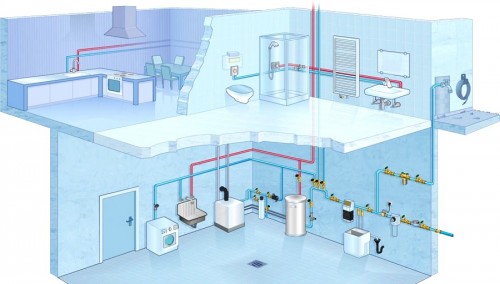
Output
An alternative embodiment in those places where there is no possibility to receive water from the central system is independent water supply problem. The main sources of water supply are of such wells, boreholes and settling near the reservoirs. The modern equipment will ensure home-quality water and in sufficient quantity.
How to make a stand-alone water supply with their own hands can be seen on the fragment:




